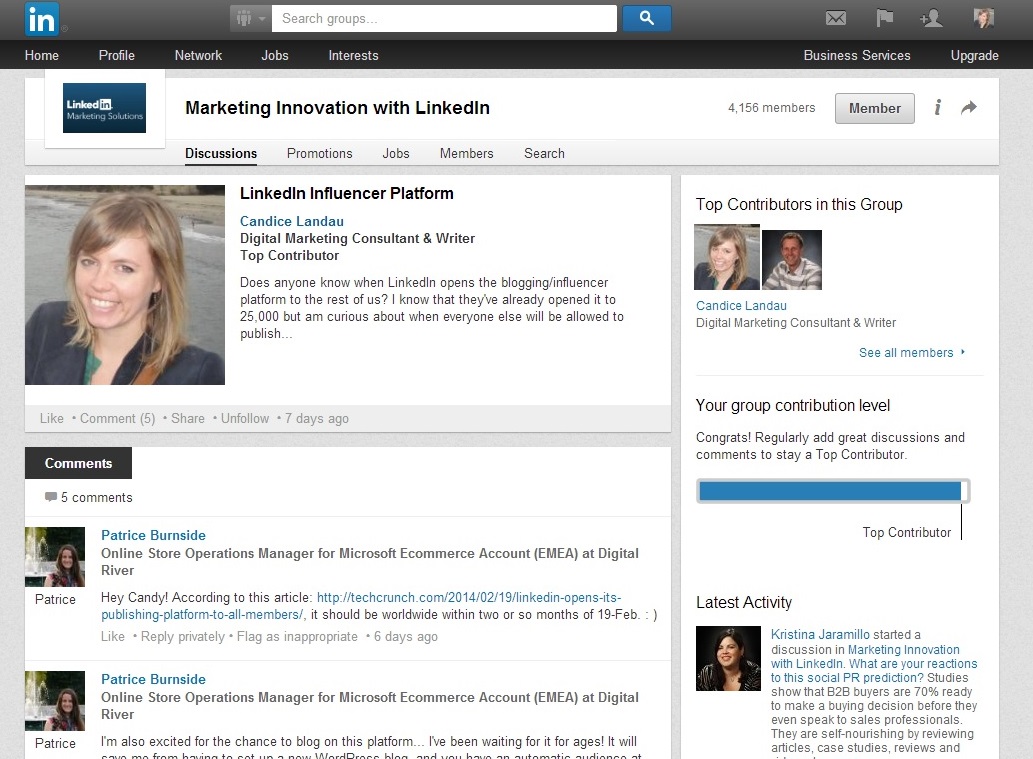Inbound marketing is the marketing or content that you put out into the world in order to attract your desired audience. It is sometimes referred to as permission marketing as marketers first obtain permission to market to a customer before actually doing so. Typical examples of permission marketing include email newsletters and direct mail catalogues, both sent in response to a request for them.
Great inbound marketing keeps that same audience coming back for more. This in contrast to outbound marketing – all those activities that ‘buy attention’ like TV ads, leaflets, traditional advertising, radio spots, cold calling, etc.
According to David Merman Scott, author of The New Rules of Marketing & PR, marketers need to “earn their way in [and not] buy, beg, or bug their way in”
If you’re running an online business, this is great news. This means that instead of forking out money for paid advertisements and press releases, you have the opportunity to focus on developing great inbound content.
Inbound marketing channels you should consider include:
- Blogs
- Podcasts
- Videos
- Ebooks
- Newsletters
- Whitepapers
- SEO
- Social media
Once you’ve figured out what type of content you need to produce in order to attract your desired target audience, you’ll want to take things a step further and target potential customers at different stages of brand or product awareness. Over time your content will ideally help to build awareness of your brand, increase interest and ultimately, result in sales. Do your marketing often and well, adapting it based on the feedback you get and you’ll find that you need to rely less and less on the old paid marketing tactics.
To help get you started, we’ve picked out a few of the top inbound marketing channels. These are the channels and techniques that will drive visitors to your site.
Great Inbound marketing increases the number of visitors to your site
Draw traffic to your site by creating remarkable online content
 That is, create content that will not only be picked up and indexed by search engines, but that people will want to share and comment on. If you can establish your company, blog or website as a place people can go to when they need information on a specific subject, or that is simply interesting enough to keep checking into, you’re on your way. Sites like Mashable, Entrepreneur.com and Moz.com have mastered this.
That is, create content that will not only be picked up and indexed by search engines, but that people will want to share and comment on. If you can establish your company, blog or website as a place people can go to when they need information on a specific subject, or that is simply interesting enough to keep checking into, you’re on your way. Sites like Mashable, Entrepreneur.com and Moz.com have mastered this.
If you don’t have anything interesting to write about, at least DO something interesting. If you do something interesting, even if you don’t write about it, you may find others will do it for you. Ideally you’ll do both!
An easy way to do this is to maintain a regular blog. If you’re a small business, make sure to post at least once a week and make sure that what you’re posting is going to be worth your audience’s time and energy. If blogging is not for you, what about a vlog (a video blog)? Even presidents occasionally do this as former Russian president, Dmitry Medvedev showed us in 2008 after visiting Latin America! And, if that’s not for you…why not try your hand at podcasts? It’s easy to get started using free platforms like SoundCloud.
All of these tactics can be used to drive traffic back to your website and to build an engaged following.
If you’re already operating a successful in-house blog full of videos, sound clips and images, consider opening the blog to guest writers. We don’t advocate doing this for SEO purposes alone, rather we advise doing so in order to improve your reputation and to grow your audience. Consider inviting industry experts to write a post, getting thoughtful customers to have their say and getting in touch with other intelligent individuals that will have something to add to the conversation.
Many websites still rely on guest blog posts to add interest to their content and to tap into the social following their guest bloggers have. If you’re not yet comfortable with taking this approach, why not conduct interviews and share them on the blog instead? Or, answer a customer’s question in the form of a blog post. There are so many things you can do, that there really is no excuse for poor content.
Join the conversation
If you’ve got the extra time, here’s another thing you can do to drive traffic to your site: contribute to the conversation by posting thoughtful comments and replies on posts, websites and forums where you will be likely to find your target audience. It’s surprising how few people do this considering how simple the approach is. Remember when LinkedIn had Q&A? Well that was definitely the place to do it then. Nowadays, you can still use LinkedIn to drive traffic back to your website and to develop relationships but you will need to do this by joining and interacting within groups.
If you’re active enough, you’ll even get yourself featured as a top contributor. It’s really not so hard to do and is a great way to get business exposure if your business name/ website is included in your strapline.
Here’s what you’ll see when you become a top contributor:
While you may find this approach time consuming, you will certainly find that the number of visitors to your corporate LinkedIn page and your website increases dramatically.
I have tested the commenting theory when marketing my own jewellery products on Etsy. If I contribute to the Etsy forums, I get views (up to 200 in a few hours). If I do nothing I don’t get a quarter as many views and the likelihood that I’ll sell anything or get ‘favourited’ drops dramatically.
Your take-home message? Get chatting.
Complete the metadata
If you’re a regular guru when it comes to posting frequently on your blog and engaging, that’s great. However, if you find yourself skimping out on completing page titles and meta descriptions (the stuff that people will see in the search result pages), you’re doing yourself a massive disservice.
By simply filling out your meta title and description, including keywords within it, you’ll drastically increase your chances of getting found and of getting found by the right people. Make sure you are using industry relevant keywords and be sure to create links between your articles/ posts so that additional relevant content is easy to find (helping to keep your bounce rate low and to keep your audience on your website) and so that Google can get a better understanding of your website.
Another thing to get right is your URL structure. Make sure that your URLs are easy to read. Don’t use spaces, instead use dashes (-) or underscores (_) if you want to separate words. Also make sure to include your article/ blog’s keyword within the URL. You’ll want them to be easy to remember and use as well as SEO-friendly.
If you use Wordpress, you’ll be able to tailor your URLs easily. When creating a blog post, beneath the tile, simply adjust the ‘permalink’ by clicking edit.
In the image below you will see my URL is far too long and wordy. There’s no way anyone will remember this. So, if I click edit I can change it to something more like ‘b2b-versus-b2c-realities’.
Be social
It’s probably obvious by now, but used correctly, social media may be one of your best friends. Naturally, without a content strategy in the first place, it’s going to be difficult to create a social strategy, but if you’ve got plenty of content to share, you should be fine.
It’s worth remembering though that what works for one business on social media may not work for another. In my experience, I’ve found that LinkedIn and Twitter generate the best referral for B2B companies, while Facebook and Twitter often generate the best referral for B2C companies. However, it breaks down further depending on what the company does. For those companies heavily invested in fashion, arts and crafts, websites like Pinterest, Flickr and Instagram may actually do a lot more than the others.
The trick is figuring out where your audience LIKES to engage with people/ companies like you. That isn’t the same as figuring out where they spend their time.
Social media without strategy can suck time. If you’re unsure about where your customers are spending their time there are a few things you can do:
- Investigate your competition. What is working/ not working for them?
- Look into similar industries that don’t directly compete with yours. What is working for them?
- Conduct a survey to find out which social networks your audience uses.
- Give a few social platforms a try and drop the ones that don’t work out (use this as a last resort).
For many of these platforms, getting people to come back to your website is largely down to your connections and the following you create. On sites like Twitter, it’s pretty easy to find people that may be interested and that you can engage with. You can do this by using Twitter’s advanced search feature. Here’s how: type in the keyword you will use to find people that could be interested in your company (remember you’re going to want to build relationships with people that have a good following). Once you’ve completed the search, you’ll notice an ‘Advanced Search’ option appears in the column on the left side of the page. Click this. You’ll end up on a page that looks something like:
Use the advanced search to find exactly the type of people you are looking for in the exact place you’re looking for them!
Another handy tool you can use to get visits to your site is Facebook Events. If you run events occasionally, it’s a great way to remind your followers to sign up. And, you can even consider encouraging them by giving incentives – discount coupons, freebies, entries into competitions, etc.
To create an event, head on over to your Corporate Page. Where you would normally post a status, you will see the option to instead post an offer or event. Click this then click event. This is what you’ll see:
Another thing you can do to increase your corporate exposure and generate traffic back to your website is to encourage employees to have up-to-date LinkedIn profiles so that your company name shows up in their tagline and so that your logo shows up on their profile page. Here’s a snippet from my own page. The Xanthos logo is clickable. Think of the exposure if ALL employees did this…
What now?
Providing you’re creating great content with headlines and images that pique curiosity, and providing you’re using these platforms frequently, you’ll find visits skyrocket. I guarantee it. If nothing else, maintain a blog and post at a minimum of once a week. Make sure to share your posts and include sharing and bookmarking icons on the blog so that you make everyone’s life that much easier.


















